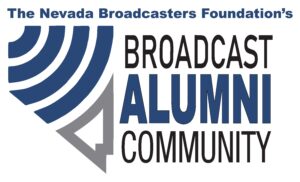This week, Commissioners Carr and Starks issued a joint statement congratulating Chairwoman Rosenworcel for circulating an order to resolve the FCC’s long-pending proceeding about whether to authorize “zonecasting” or “geo-targeting” for FM stations. Zonecasting would allow FM broadcasters to use FM booster stations operating on the same channel as their main signal, within a station’s existing service area, to originate different programming in different parts of their markets. Theoretically, this would allow a station to run different commercials in different parts of a station’s service area during the same commercial break. The Commissioners applauded the technical innovation giving broadcasters a choice as to whether they will implement the new system. While some small broadcasters have supported this proposal, many other broadcasters have vehemently opposed the idea. Why would so many broadcasters oppose the idea that the Commission seems poised to adopt?
Many of the objections are technical in nature. Even though the proponents of the system argue that they have minimized any interference that would occur from different FM boosters originating different programming on the same channel as the main station on the same frequency in the same service area, other broadcasters argue that no matter how good the technology, putting more signals on the same channel cannot avoid creating more FM noise. In today’s electronic world, there are already innumerable sources of potential noise to over-the-air signals, and adding programming on the same channel cannot avoid adding to the problem.
Other broadcasters worry about the impact on the economics of the radio industry, and the impact that this proposal might have on radio localism. Radio stations predominantly rely on local advertising dollars to support their local service (probably including most of the very stations that have indicated their support for the proposal). If a big central-city station can originate unique ads in different outlying parts of its metropolitan area, these ads will impinge on the ability of stations providing service only in outlying communities to support their locally targeted programming. For a Commission looking to encourage localism (see our article here on the FCC’s recent proposal to prioritize the processing of applications filed by stations with local programming), it would seem strange to allow bigger stations (already able to attract the national and regional advertising dollars for which smaller stations cannot compete), by locating a booster in an outlying community, to also compete for the local advertising dollars that support these smaller stations in outlying communities.
And what would be the benefit? Proponents have argued that this system would allow radio to better target their ads, to be able to compete with the geo-targeting of online competitors. But opponents contend that radio is a “reach medium” designed to convey messages to broad audiences in specific geographic areas. While it can target audiences through programming developed to appeal to certain demographic groups, to be successful any station must reach a sufficiently large audience to interest advertisers in placing their ads on the station. Stations need to reach a large enough audience to attract advertisers – the reason why stations tend to broadcast popular formats that appeal to wide groups of listeners. In all but the largest markets, a niche format simply will not attract the number of listeners sufficient to attract the advertisers necessary to sustain station operations. Similarly, except for the largest stations that can reach into adjacent markets, the audience for unique messages on a booster likely will not be sizeable enough to attract advertising revenues sufficient to offset the costs of constructing, operating, and maintaining the FM boosters that need to be deployed for zonecasting.
Opponents argue that radio does not, and even by deploying zonecasting will not, be able to target specific audience members as does digital media. Nor will this new service offer the broadcaster any opportunity to grow its audience. Unlike digital ad companies, who accumulate advertising inventory from tens of thousands of websites to be able to offer advertisers micro-targeted advertising to consumers whose interests are to some extent already known by their online browsing history, radio will reach the same audience it currently has, even with zonecasting. But zonecasting will slice that audience into ever-smaller pieces by limiting the geographical reach of any ad. For most stations, being able to offer ads to a neighborhood may end up being meaningless to their revenue streams as there will simply not be enough listeners in that neighborhood to interest advertisers. Zonecasting does not offer the opportunity to grow the radio audience reached by a broadcaster in a market, but instead it further slices and dices that radio audience into smaller groups less attractive to advertisers – not more attractive as its proponents suggest.
Of course, these competing positions have already been staked out in many rounds of formal and informal comments filed in the last several years on this rulemaking proposal. The Commission appears ready to act – and we will be watching for its decision in the near future.


